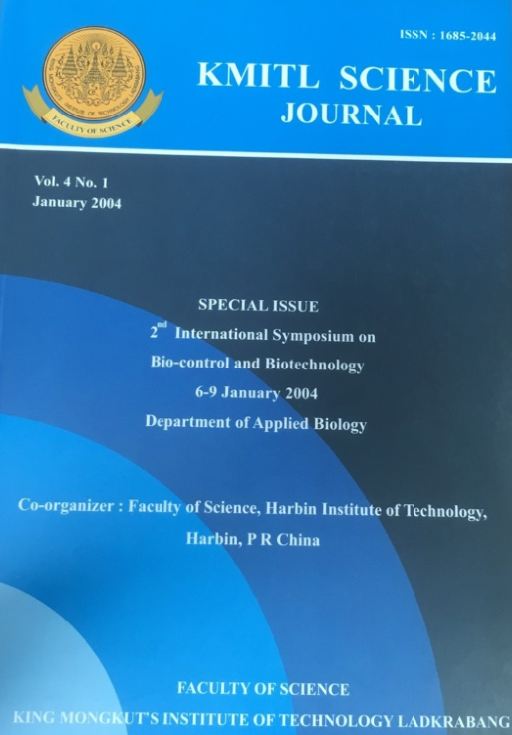Bacterial Cellulose Production by Soybean Whey Based Medium
Main Article Content
Abstract
Bacterial cellulose, produced by Acetobacter, is a novel biomaterial. Soybean whey is the byproduct of the soybean protein. A medium containing soybean whey for producing bacterial cellulose by Acetobacter xylinum C5 was optimized to both reduce the cost of cellulose production and utilize the soybean whey. The results showed that sucrose, ammonium sulfate, peptone, MgSO4·7H2O and citrate are suitable for the production of cellulose. The best fermentation medium for the strain is sucrose 7%, peptone 0.5%, ammonium sulfate 0.5%, MgSO4·7H2O 0.2%, and citrate 0.1%. The yield of bacterial cellulose was increased when fermented in the medium reported in this paper.
Keywords: bacterial cellulose, soybean whey, Acetobacter xylinum
Corresponding author: E-mail: cast@kmitl.ac.th
Article Details
Copyright Transfer Statement
The copyright of this article is transferred to Current Applied Science and Technology journal with effect if and when the article is accepted for publication. The copyright transfer covers the exclusive right to reproduce and distribute the article, including reprints, translations, photographic reproductions, electronic form (offline, online) or any other reproductions of similar nature.
The author warrants that this contribution is original and that he/she has full power to make this grant. The author signs for and accepts responsibility for releasing this material on behalf of any and all co-authors.
Here is the link for download: Copyright transfer form.pdf
References
[2] A. Okiyama, M. Motoki and S. Yamanaka, Bacterial Cellulose IV. Application to Processed Foods, Food Hydrocolloids, 6(6), 1993, 503-511.
[3] F. Yoshinaga, N. Tonouchi and K. Watanabe, Research Progress in Production of Bacterial Cellulose by Aeration and Agitation Culture and its Application as a New Industrial Material, Biosci. Biotech. Biochem, 61(2), 1997, 219-224.
[4] Y. Ma, Extraction of Oligosaccharides from Soybean Whey and Its Modification by Enzyme (PhD. Thesis: Northeast Agricultural University, 2000).
[5] T. Oikawa, T. Ohtori and M. Ameyama, Production of Cellulose from D-mannitol by Acetobacter xylium KU-1, Biosci. Biotech. Biochem, 59(2), 1995, 331-332.
[6] K.V. Ramana, A. Tomar and L. Singh, Effect of Various Carbon and Nitrogen Spurces on Cellulose Synthesis by Acetobacter xylium, World J. Microbiol. Biotech, 16, 2000, 245-248.
[7] A. Seto, Y. Kojima and N. Tonouchi, Screening of Bacterial Cellulose-producing Acetobacter Strains Suitable for Sucrose as a Carbon Source, Biosci. Biotech. Biochem, 61(4), 1994, 735-736.
[8] M. Satochi, O. Tatsuhiko and S. Naokazu, Production of Cellulose from Glucose by Acetobacter xylium, J. Fermentation and Bioengineering, 75(1), 1993, 18-22.
[9] M.E. Embuscado, J.S. Marks and J.N. BeMiller, Bacterial cellulose I. Factors Affecting the Production of Cellulose by Acetobacter xylinum, Food Hydrocolloids, 8(5), 1994, 407-418.
[10] S.X. Liu, M. Q. Li and Z.G. Fang, Studies on the Conditions of Nata Fermentation in Coconut Water, Food and Fermentation Industries, 25(1), 1999, 36-39.
[11] X.B. Yu, Y.R. Bian and W.H. Quan, Investigation of Optimal Medium Composition for Microbial Cellulose Production by Acetobacter xylinum, Biotechnology, 9(3), 1999, 27-30.


